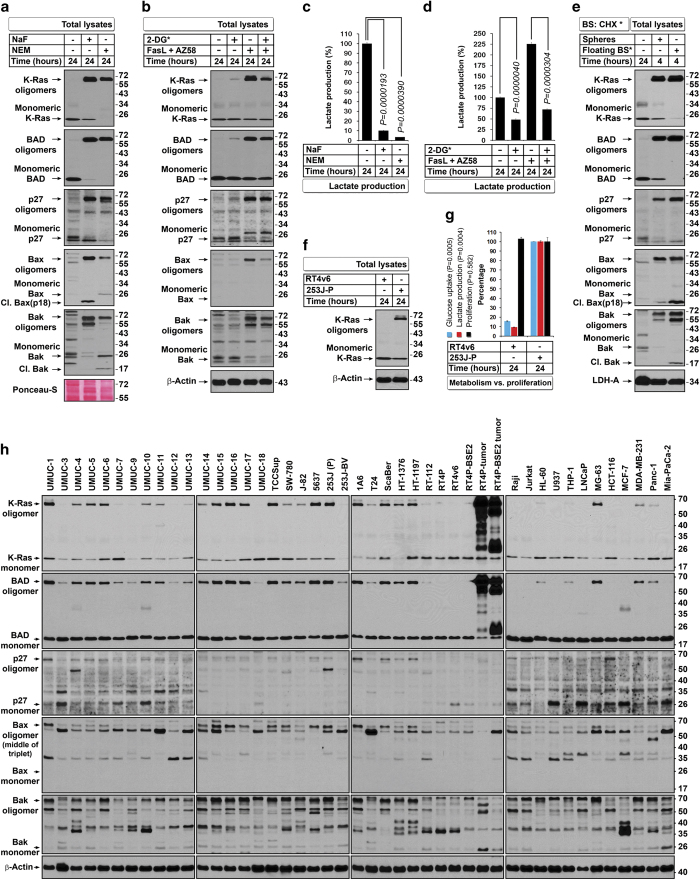Figure 6.
Oligomers of K-Ras, p27, BAD, Bax, and Bak boost glycolysis in blebbishields and non-apoptotic cells. (a) NaF and NEM enhance oligomerization of K-Ras, BAD, p27, Bax, and Bak. (b) 2-Deoxyglucose (2-DG*) induces oligomerization in non-apoptotic cells but interferes with oligomerization in FasL+AZ58-generated blebbishields. (c and d) NaF, NEM, and 2-DG* inhibit lactate production, reflecting inhibition of glycolysis. Controls considered 100%. Note that FasL+AZ58 increases glycolysis (apoptotic energy demand) (c) as well as oligomerization (b) (n=3). (e) Oligomers are expressed in both sphere-forming and non-sphere-forming blebbishields (floating BS*, floating blebbishields); monomers are expressed only in sphere-forming blebbishields. *BS: CHX, blebbishields generated by treatment with CHX 10 μg/ml for 24 h. (f and g) Oligomers represent highly glycolytic cancer cells under non-apoptotic conditions. 253 J-P cells constitutively express K-Ras oligomers (f) and have increased glucose uptake and lactate production although proliferation differences were insignificant (g). 253 J-P measurements were considered 100% (n=3). (h) Oligomers are widely expressed in cancer cells under non-apoptotic conditions and in vivo (tumor samples: BSE2, tumors from blebbishield-derived cells). Bax reference band (arrow) is the middle of a triplet of oligomers of UMUC-15 that also correlates with K-Ras and BAD patterns across cell lines (also refer to Bax oligomers in panel (a)).

